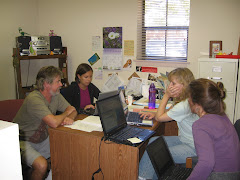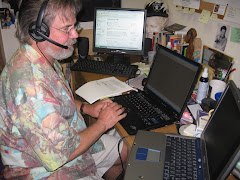I was asked recently if the on-line course we are currently constructing could be taught by anyone with the appropriate background or only by me, the content specialist. I found this question to be more complex than I first thought. After a few days of free-range mulling, I offer the following analogy.
When an educator volunteers to teach a completely new course, construction begins from scratch, with the foundations poured from well-mixed solid reading, the walls from planks of prior experience and the plaster of accumulated wisdom mixed with student needs assessment data, the roof from coherent syllabus tiles, and so forth.
When an instructor is first invited to teach an existing course, however, we provide the equivalent of an unfurnished apartment: the structure is in place, water and electricity are connected. Previous syllabi and materials are available for inspection and use, and the juice of institutional experience runs through the pipes and power lines. The newcomer makes it her own with the furniture, appliances and fixtures of her own experience, knowledge and preferences.
The on-line course, in contradistinction, is shown to a new instructor as a furnished place. It is fully equipped with activities, tasks, projects; with written, audio and video inputs. One can move in immediately. However, there are also more personal items left by the original occupant: photographs, objets d'art, food stores in the pantry, wine in the cellar, magazines on the coffee table, which will almost certainly not suit the new tenant. These items are swept into a box for storage and replaced by others better reflecting the tastes and preferences of the new resident.
With the Moodle, this is easy; with a single click, items can be hidden (the icon suggests that they take a nap in the meantime) and new ones are readily created and posted. The exceptions in our course are one or two more elaborate features: each of the five modules of our course, for example, is introduced by a video clip of myself, a magnificent local view in the background, welcoming participants to the next stage of the course and providing a brief overview of what to expect. Even with a transcript as a guideline, to replace these would require some time and effort. But everything else is ready: you can move in tomorrow, stroll through the architecture and begin nesting.
Of course, it doesn't end there. The course begins, and now will enter the rest of the occupants, spilling into the wikis and bulletin boards and discussion rooms and bringing a host of new artefacts. It's not an apartment or a house, it turns out; it's more like a college dormitory, buzzing with chat, colourful commentary posted everywhere and witty comments scrawled on the bathroom walls. People wander in and out of the different rooms, starting conversations at all hours of the day and night.
So I conclude that it is not my course for me to teach; it is not our course for any member of the team to teach; it is not a course for anyone to teach. It is a modular, object-oriented, digital learning environment which will belong to the particular learning community which rents it; and they will bring in their own stuff and leave it looking very different. After all, Disneyland is just a lot of architecture and engineering until the gates open, the people pour in and the magic begins.
Welcome to Moodleland, the happiest place in cyberspace.






No comments:
Post a Comment